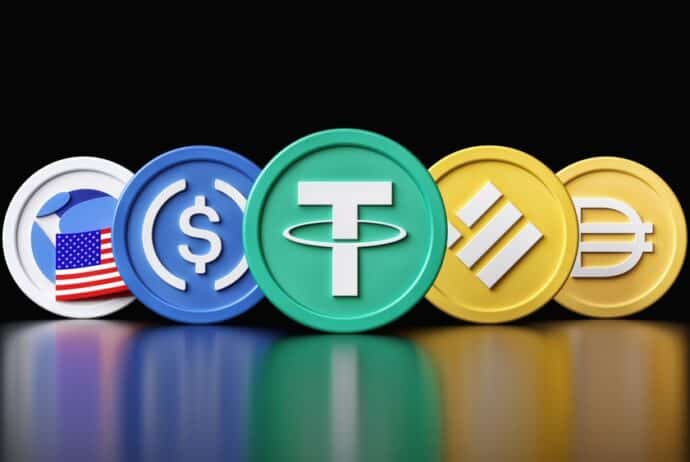On Thursday, the United States House Financial Services Committee turned its focus on stablecoins months after Republicans disapproved a bill (the Stablecoin Trust Act) that aimed to regulate this class of crypto assets. Committee member Maxine Waters revealed that no significant progress was made regarding stablecoin regulation, and it appeared that Congress would be starting from scratch.
Democratic Representatives have now introduced another stablecoin bill to the House, although it does not have a catchy name just yet. At the moment, they are calling it the ‘To be Added Act of 2023.’ But the bill is already attracting criticism, with Representative Stephen Lynch saying that the recent banking crisis shows the necessity of isolating crypto assets from traditional Finance. He argues that the bill is doing nothing to protect financial institutions.
The Financial Services Committee’s discussion on stablecoin legislation came two days after some of its members interrogated Gary Gensler, the US Securities and Exchange Commission chairman. The Committee members wanted Gensler to elaborate on the agency’s approach toward the crypto industry.

CypherMindHQ.com Artificial Intelligence Crypto Trading System - Surpass the competition with this cutting-edge AI system! Utilize the prowess of innovative algorithms and amplify your crypto trading strategies with CypherMindHQ. Learn more today!
Stablecoin Ties to Traditional Financial Institutions
As mentioned earlier, Lynch has argued that crypto assets pose a huge risk to traditional banks, yet it was the collapse of one of the largest financial institutions that caused temporary havoc in the crypto industry in early March.
The sudden closure of the Silicon Valley Bank triggered the second-biggest stablecoin by market capitalization, USDC, to depeg. The coin dropped to $0.88 but later rebounded to its intended $1 price after intervention from the US government, guaranteeing that all Silicon Valley Bank depositors would access their funds.
At the time, the USDC issuer Circle said the main takeaway from the Silicon Valley Bank collapse was that the company needed to adopt measures that could protect itself from future exposure to the traditional banking system.
The latest stablecoin bill is proposing a two-year suspension on stablecoins that use other tokens to maintain their prices to give room for the US Treasury Department to research and set standards for reporting and interoperability.
How Has NYDFS Handled Stablecoins?
Among those invited to yesterday’s stablecoin legislation meeting is Superintendent Adrienne Harris from the New York State Department of Financial Services (NYDFS). Last June, the state agency released regulatory guidance on how stablecoin issuers should operate in New York. Moreover, the NYDFS gave BUSD’s issuer Paxos the green light to distribute the stablecoin months ago but ordered the company to cease further token issuance in February.
Waters was a bit surprised after Harris disclosed to the Committee that New York already had a legal framework in place for governing stablecoins.

CypherMindHQ.com Artificial Intelligence Crypto Trading System - Outpace the competition with this high-end AI system! Leverage the capabilities of progressive algorithms and enhance your crypto trading performance with CypherMindHQ. Learn more today!
Stablecoins make up 10% ($132 billion) of the total crypto market capitalization, per data from CoinGecko. The largest stablecoin is Tether’s USDT, with a market cap of $81.1 billion, followed by Circle’s USDC, which has a market valuation of $32.34 billion.
Blockchain Association Weighs in
Another guest who appeared in the Financial Services Committee meeting is Jake Chervinsky, the Chief Policy Officer at Blockchain Association. Chervinsky previously wrote a letter to the Committee urging the government to support stablecoins rather than developing a Fed-issued CBDC (Central Bank Digital Currency).
Yesterday, he reiterated his statement, saying that stablecoins pegged to the United States dollar are likely to reinforce the greenback’s dominance globally at a time when US rivals like China are looking to diminish its status as the world reserve currency.
Regulating in Terra’s Shadow
Yesterday’s meeting comes eleven months after the implosion of Terra’s UST stablecoin, which left investors over $35 billion short. UST was an algorithmic stablecoin that maintained its value using market incentives and code, unlike conventional stablecoins, which are backed by traditional assets such as gold.
The collapse of Terra’s stablecoin caused several companies to go under, including crypto lenders Voyager and Celsius. At the time, Treasury Secretary Janet Yellen advocated for tougher stablecoin regulation. Gensler also suggested that stablecoins should only be used as a settlement tool in DeFi (decentralized Finance).
Last July, Fed Chairman Jerome Powell said stablecoins resemble money market mutual funds and bank deposits and, therefore, should be subject to the same regulations.



